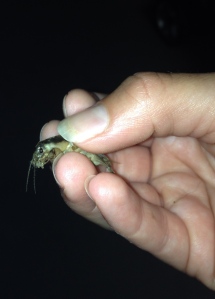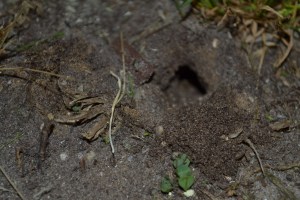Let them Bee!
It’s that time of year again and concerned calls regarding ground nesting bee activity have started to roll in. While these pint-sized pollinators and their bustling “bee-burgs” can be intimidating, there is little cause for alarm. Of the 4,000 native bee species within the US, 70% nest below ground1. These include: membrane bees, digger bees, leaf cutter bees, mason bees and tiny metallic sweat bees. Ground nesters also known as mining bees, are solitary bees and do not belong to a queen ruled, drone defended colony. Many native ground nesting bees are described as specialist pollinators and are vital to the ecosystem. These species have specific groups of flowers, shrubs and fruit trees that depend on their pollination services.

From February to mid-May female ground nesting bees tunnel into the soil creating nesting chambers. From the exterior, a chamber resembles an ant mound yet has an opening a bit wider than the bee who made it, usually ¼ in diameter. On the interior, the chamber may exceed twelve inches in depth and branch multiple times into single brood cells. Over a period of several weeks, female bees will provision each cell with collected pollen and nectar, lay a single egg within each brood chamber and then seal them. The larvae feed off the packed pollen and nectar as they develop2. These bees will overwinter as adults and emerge between February and May to mate and begin the cycle again (personal observation).

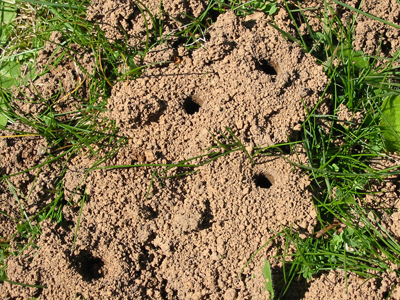
Although these bees are solitary they tend to be gregarious nesters and bee-burgs may result when favorable habitat and environmental conditions occur. Sandy, well-drained soils lacking ground cover with plenty of sun are preferred to moist, vegetated areas. One may witness large numbers of male bees gathering near a burrow entrance trying to gain access to a female. While bee-burgs and their residents may appear menacing, ground nesters are not wired to swarm in vigorous defense of a colony and are in reality quite docile as they move from flower to nest and back again.
Habitat loss, climate change, competition from invasive species, disease and parasites are just a sampling of the multiple threats facing our native bees, bees that are critical for native plant pollination. Ground nesting and mining bees are active for a short window of time, usually about 4 weeks. I would like to encourage readers to have patience and endure these important species for the short time they are around. If bees become a nuisance, future females may be discouraged from burrowing in possible nesting sites by providing adequate ground cover in the form of mulch or dense turfgrass and by increasing soil moisture through irrigation3. When it comes to ground nesting bees, conservation not elimination is key!
References:
1 https://entomology.cals.cornell.edu/extension/wild-pollinators/native-bees-your-backyard
2 http://www.fs.usda.gov/Internet/FSE_DOCUMENTS/stelprdb5306468.pdf
3. Brandenburg R.L., Freeman C.P. 2012. Handbook of Turfgrass Insects. 2nd ed. Entomological Society of America, Lanham, MD.
it’s winter but Don’t Let those “Tick checks” slide!
During the winter months in the coastal Carolinas, temperatures often fluctuate between what I consider flip flop and duck boot weather. Yet even on our colder days, ticks can still be found actively searching for hosts (that’s us)! In fact the Lyme disease vectoring black-legged tick, or deer tick as it is commonly called, is not killed by freezing temperatures and is in fact quite active above 35ºF. Already this winter I have pulled several off the kids and dog. Keep up those tick checks, bottle – label with the date – and toss in the freezer any you remove and continue reading below to learn more about the ticks commonly found in our area.
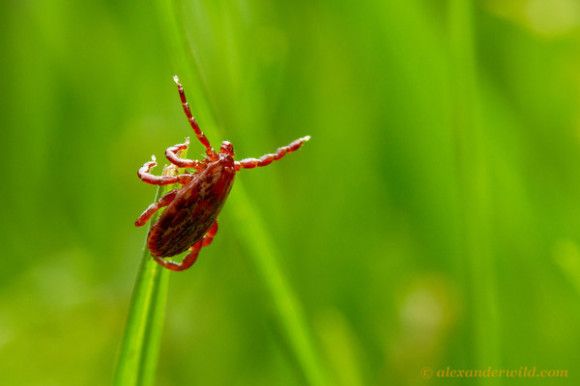 Questing tick captured by Alex Wild. Check out more of his fantastic work here http://www.alexanderwild.com
Questing tick captured by Alex Wild. Check out more of his fantastic work here http://www.alexanderwild.com
Four tick species are endemic to North Carolina: the lone Star tick, black-legged tick (commonly known as…
View original post 660 more words
Spring Grub Damage and Adult Flights Underway
We are getting reports of losses due to grub damage this spring along coastal areas. I have yet to confirm if these are indeed grub infestations or as I suspect a result of winter kill. Dry conditions are taking a toll on turfgrass currently not under an adequate irrigation regime and will exacerbate damage from grubs present in the soil and actively feeding. Please remember it often takes upwards of 10 grubs per square foot to initiate damage if turf is otherwise healthy. The presence of a grub here or there is likely not the cause of your turf troubles. Be aware that any large grubs you may see are extremely difficult to kill at this time and will soon pupate and become adult beetles.

May beetles (Phyllophaga spp.) adults have been actively flying for several weeks and the southern masked chafer (Cyclocephala lurida) flights are now underway. Female beetles will mate and move back into the soil to lay eggs over the next several weeks. Preventive insecticides with a long soil residual will kill young grubs as they hatch over the summer months. Have grub questions or need help give us a call! We also provide customized trapping for golf courses and sod farms and tailor management plans for the unique species you are dealing with!
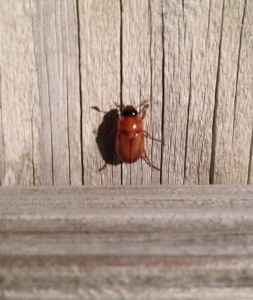
Love Is In The Air
Spring, a time when love is in the air, quite literally as I was reminded by a female southern mole cricket who flew smack dab into my face last night as I was exiting the garage. It appears I was in the way of this Ladylove and her boisterous suitor who has taken up residence in our front lawn. Mole crickets are truly strange looking chimera-like insects with a head and thorax resembling a crawdad (crayfish), an abdomen of a large cricket and strong, fossorial, mole-like forelegs that allow them to churn through the soil.
The exotic tawny, southern, and short-winged mole crickets were introduced from South America over 100 years ago and are the species most associated with injury to turfgrass. The tawny and southern mole cricket are found in the southern U.S. while the short-winged mole cricket is exclusive to Florida. Many turfgrass managers in northern states consider mole crickets a southern problem and are often caught off guard when they happen upon the native northern mole cricket. The northern mole cricket (which occurs in the south as well oddly enough) is often associated with wetlands and marsh-like habitats. On rare occasions this species becomes a problem for managed turfgrass near water-features. All mole cricket species inflict damage by tunneling through turfgrass. The tawny and short-winged mole crickets also feed almost exclusively on turfgrass plants and are capable of exacting substantial damage.
Mole cricket mating flights appear to be in full swing now here at the coast. The trill of male crickets’ calling from their megaphone-like burrows fill the humid night air. Females will choose a male to mate with and subsequently where to lay her eggs based on the quality of a male cricket’s call. Eggs are subject to desiccation therefore females are more attracted to calls produced from burrows containing adequate soil moisture to ensure survivability of her young. Our Romeo from last night had made a wise choice by constructing his burrow 2.5ft from a sprinkler head in an area of the yard I lovingly refer to as “Poa Ptch”. Historically flight periods for mole crickets in North Carolina fall a month behind crickets in the southern range of Florida by about a month. Look for mating flights and egg laying to continue into June and waning in July and August.
As is the case with other insects, mole crickets are easiest to kill when they are young, specifically when they are less than a half inch long. Unfortunately many folks don’t realize they have an infestation until damage becomes evident from the older, larger crickets in August, they then put out a treatment that results in poor control. Egg hatch usually occurs five to six weeks after mating therefore tracking mating flight duration and egg hatch is crucial for successful management. A useful trick for monitoring mole cricket hatch and development is the soapy water flush. Easily mix 1 oz of lemon scented Joy dishwashing liquid in 2 gal of water and pour over an area of about 10 square feet. The soap will irritate the crickets and force them to the soil surface. This process may take up to 15 minutes so be patient. Another important factor to take into consideration when dealing with mole crickets involves their ability to detect and avoid insecticide treated soil. Research from NC State’s turfgrass entomology program has shown that mole crickets have the ability to detect soil treated with either biological control agents and conventional insecticides. The ability of mole crickets to avoid or escape treated soil is greater for older crickets which again makes monitoring important.
For more on mole cricket insecticide avoidance check out Dr. Diane (Silcox) Reynold’s Master’s work here: http://repository.lib.ncsu.edu/ir/bitstream/1840.16/6707/1/etd.pdf
We will be keeping an eye on our mole cricket nursery now in “Poa Patch” and keep you updated on the progress of our newest additions throughout the summer!
Ground Pearl Damage Becoming Evident
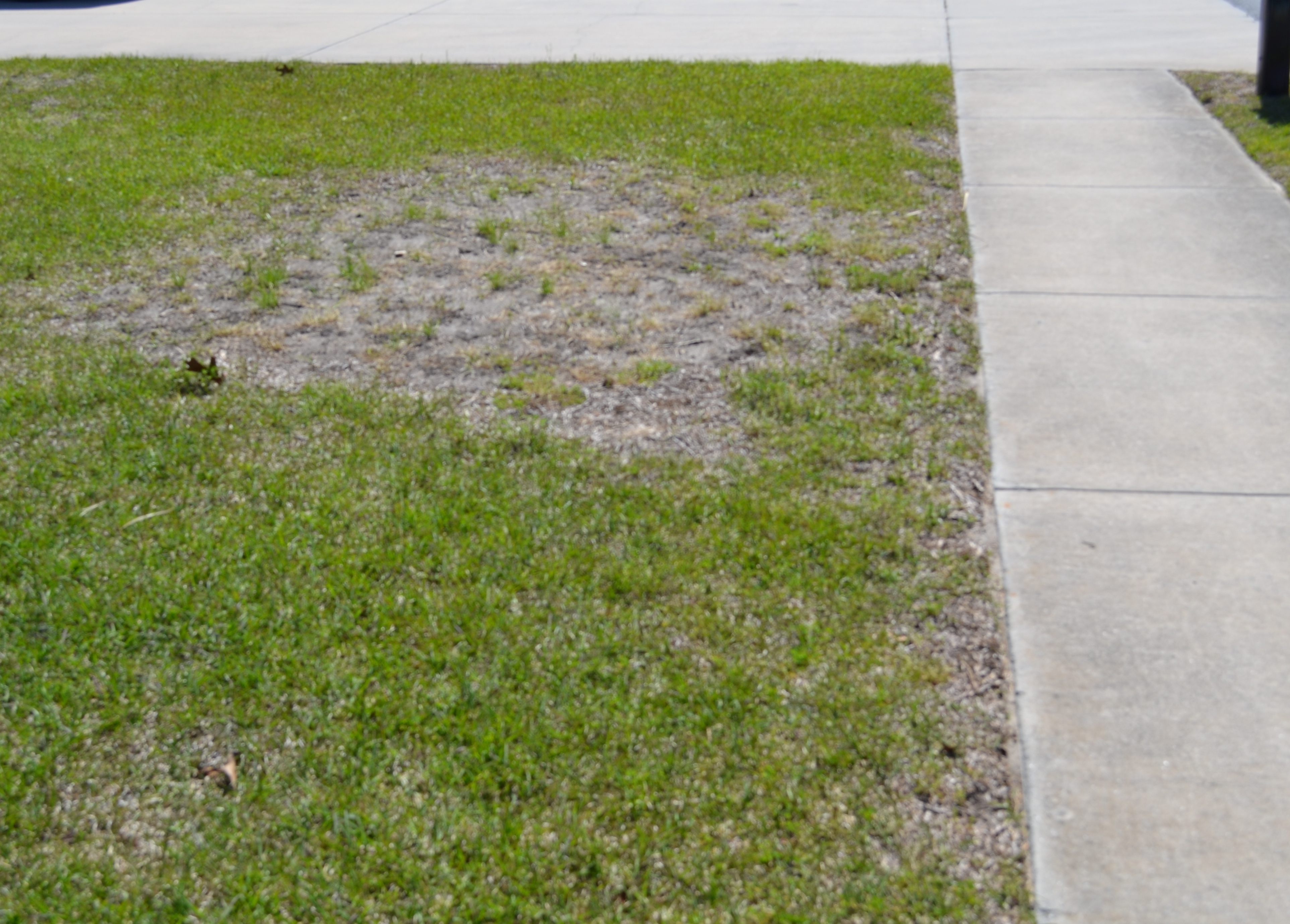 Damage to centipede home lawns from ground pearl infestations is now becoming evident as spring green up begins. Soil sampling along the boundaries of healthy and dead turf will reveal the pearl-like cysts.
Damage to centipede home lawns from ground pearl infestations is now becoming evident as spring green up begins. Soil sampling along the boundaries of healthy and dead turf will reveal the pearl-like cysts.
April showers bring May flowers which usher in June “bugs”!
This was a previous post from last year but the same principals apply! The bugs are gearing up and you should too!
I confess, I have attached a slightly different ending to the old adage above and suggested insects tend to appear in June, but for some of our biggest turf adversaries this is indeed true! So who are the big players that are starting to make their grand entrance? Let’s start with two coastal Carolina favorites, the tawny and southern mole crickets. These strange creatures look more like a byproduct of the Fukushima reactor; a crayfish-like giant cricket which causes extensive damage to turf through their tunneling and feeding activities. Coastal North Carolina is the northern range for these two non-native species accidentally introduced from South America. Their distribution includes all southeastern coastal states from North Carolina up to and including east Texas. The appearance of these crickets in late spring is attributable to mating flights of adult crickets. During these flights females fly to male crickets that beckon from deep…
View original post 610 more words
And Then There Was One
It may be hard to believe in this day and age, but there still exists a certain turfgrass insect pest for which we have no viable management recommendations! If you are unfamiliar with the tiny troublemaker ground pearl, also known pearl scale, then count yourself lucky!
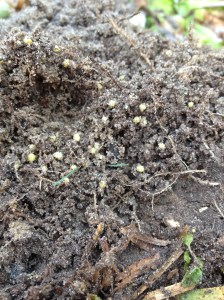
Ground pearls are a type of scale insect that infests roots of warm season turfgrass throughout the southern ranges of the US. Ground pearls earned their name from the protective covering they secrete which encapsulates the immature and adult stages, giving them a pearl-like appearance. Ground pearls are known to attack all warm-season grasses but are most common on centipedegrass, bermudagrass, zoysiagrass and St. Augustinegrass. Centipedegrass and bermudagrass are considered the most susceptible to ground pearls.
Ground pearls, although considered sporadic, are devastating where they occur, killing plants by sucking juices from the roots and leaving only weeds and bare soil in their wake. It has been suggested that ground pearls also inject toxins into plant roots to ease feeding which in turn hastens the death of the plant. Ground pearls are like a cancer, spreading slowly (only a few inches) each year from the point of infestation. No chemicals have proven effective for ground pearls and even worse, turf that is replanted either from sod, seed or sprigging, fails to grow in previously damaged areas. It is only a matter of time before they overtake an entire site!
The key to ground pearl control likely resides in targeting the most susceptible life stages. Ground pearls overwinter in the immature (nymph) stage encased in a pearl-like protective nodule. In late spring, adult females emerge and migrate ~2–5 inches through the soil using a pair of strong claw-like forelegs. In some cases, females will travel to the soil surface and mate with winged gnat-like males; they do not require males to produce viable eggs. The female will then fashion a tube or egg-sac out of waxy material in which she deposits roughly 100 eggs. Most of these egg masses are found within 2–3 inches below the soil surface. Within 2 weeks eggs hatch into crawlers, the first nymphal stage. Crawlers seek out and settle onto healthy turfgrass roots. Once settled, the crawlers stick their sucking mouthparts into rootlets to feed and subsequently secrete their protective pearl-like covering. As the nymph feeds and molts its protective shell will continue to grow.
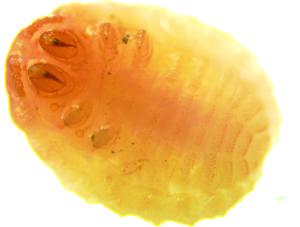
There are several reasons as to why ground pearl management is incredibly challenging. The foremost reason is their protective pearl-like enclosure in which they spend the majority of their lives. This shield-like coating serves as a barrier to chemical insecticides and prevents them from losing water or dessicating during long periods of drought. Ground pearls are said to be able to survive multiple years of dry periods as well as in the absence of food. They also may be found a foot deep in the soil making chemical contact of an entire population challenging. This also means attempts to remove the first several inches of soil will not get rid of the pest!
Over the next few years we will be working to better understand the biology and ecology of ground pearls in eastern North Carolina. Studies to ascertain susceptible life stages and their timing will be included as well as screening newer pesticides. Stay tuned and we look forward to sharing our progress!
Selected Reference
Hoffman, E. and R. L. Smith. 1991. Emergence and dispersal of Margarodes meridionalis (Homoptera: Coccidae) in hybrid bermudagrass. J. Econ. Entomol. 84: 1668- 1671
Time to get rid of old pesticides!
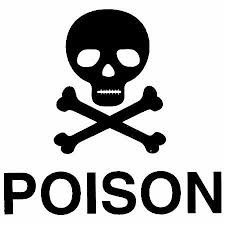
Do you have old pesticides hanging around you need to get rid of but aren’t sure how to go about it? Well you’re in luck, the Pesticide Disposal Assistance Program or PDAP (gotta love the government’s affection of acronyms) which falls under the North Carolina Department of Ag and Consumer Sciences is starting to release their fall schedule collection dates which you can find here. According to their website this is a FREE, non-regulatory service. In other words its your no-harm, no-foul chance to get rid of out-dated or banned substances! Last year the program is said to of hauled in over 140,000lbs of unwanted pesticides!
The collection kicks off in our own Carteret County on Wednesday August 14th from 2-4pm in Morehead City. For more information please visit the Carteret County Extension page.
Other states/counties provide similar services so be sure to check with your local cooperate extension service!
April showers bring May flowers which usher in June “bugs”!
I confess, I have attached a slightly different ending to the old adage above and suggested insects tend to appear in June, but for some of our biggest turf adversaries this is indeed true! So who are the big players that are starting to make their grand entrance? Let’s start with two coastal Carolina favorites, the tawny and southern mole crickets. These strange creatures look more like a byproduct of the Fukushima reactor; a crayfish-like giant cricket which causes extensive damage to turf through their tunneling and feeding activities. Coastal North Carolina is the northern range for these two non-native species accidentally introduced from South America. Their distribution includes all southeastern coastal states from North Carolina up to and including east Texas. The appearance of these crickets in late spring is attributable to mating flights of adult crickets. During these flights females fly to male crickets that beckon from deep within their calling chamber. Interestingly, the attractiveness of a call is directly related to the soil conditions within the chamber. Most subterranean insect eggs are subject to desiccation and therefore, the better the soil moisture within a calling chamber the “sexier” the call to a female. Think Barry White or Conway (high soil moisture = we’ve got this) versus Tiny Tim tiptoeing through the tulips (your eggs aren’t surviving here ladies). In their southern range, peak flights occur from March through June depending on species. Two additional mole crickets also occur here in the states, the native northern mole cricket, which can be found from New England south to Florida and over to the Great Plains and the shortwinged mole cricket which is found in restricted populations throughout Florida. Northern mole crickets usually are found in sandy low-lying spots often surrounding water and are rarely damaging but do tend to throw the northern turf managers for a loop! Ya’ll already have enough to deal with, right? For the past month I’ve received many reports of nuisance tunneling but this is from late nymphal mole crickets(not quite adults yet). Mating flights have yet to begin in our area and reports from areas further south (Auburn University, Dr. Dave Held @held_david) suggest adults are present but egg hatch has yet to begin. I suggest delaying treatments as it can be very difficult to kill nymphal crickets of this size. Mole crickets, like many insects, demonstrate developmental resistance meaning they become more difficult to kill as they age. Much like white grubs, control of crickets is best achieved by targeting them as they hatch from the egg. In North Carolina this usually occurs mid June to mid July but as always we will keep you posted on adult flight timing.
Adult Japanese beetle, May beetle, masked chafer, oriental beetle, and Asiatic garden beetle flights will also kick into action in June. In fact adults of all the aforementioned species except Japanese beetles have already started showing up in light trap catches. If you have performed any renovations to the lawn or landscape in the past month you have likely run into large grubs. Not to worry, this time of year most grass species are able to outpace any root pruning grubs that may otherwise harm your lawn under different circumstances (summer drought, fall dormancy). These grubs are also particularly hard if not impossible to kill once they reach this size again due to developmental resistance. Control of these species is best achieved at egg hatch when grubs are youngest. Adult flights indicate mating and peak egg-laying are in your not so distant future.
Japanese beetles are daytime (diurnal) flyers and their presence will be the most obvious. Adults of other grub species are cryptic (often nocturnal or stay close to emergence sites) and therefore may go undetected. In North Carolina, Japanese beetle flight often falls smack in the middle of other species’ flight timing and therefore they may be a useful indicator species for appropriate insecticide timing. As always, the effectiveness of control measures is dependent on proper pest identification, understanding of life cycle, and appropriate timing of treatment. Become familiar with the species that occur in your area, determine how to monitor and decide which stage to target with control treatments.
In the case of mole crickets and white grubs, soil insecticides should provide a sufficient residual window to cover the period of egg hatch to ensure control. These products must be watered in to move through the soil profile and reach immatures as they hatch. Be sure to follow us on Facebook and Twitter for updates on pest activity!

